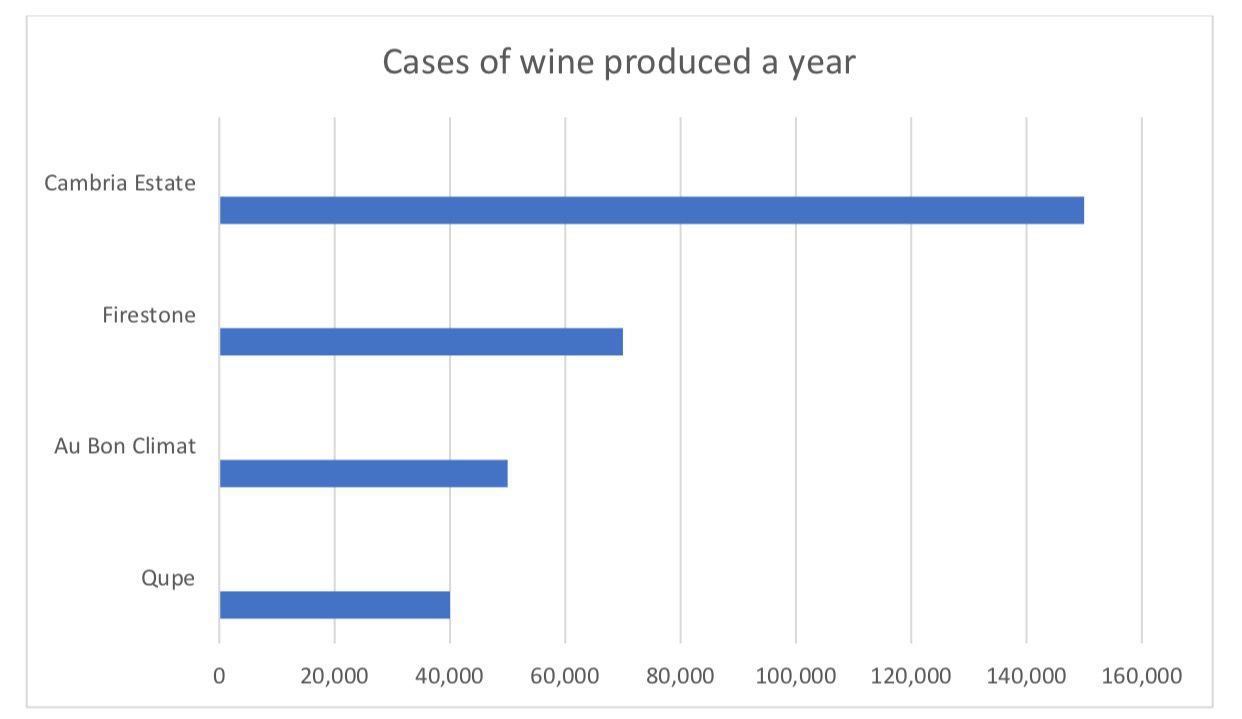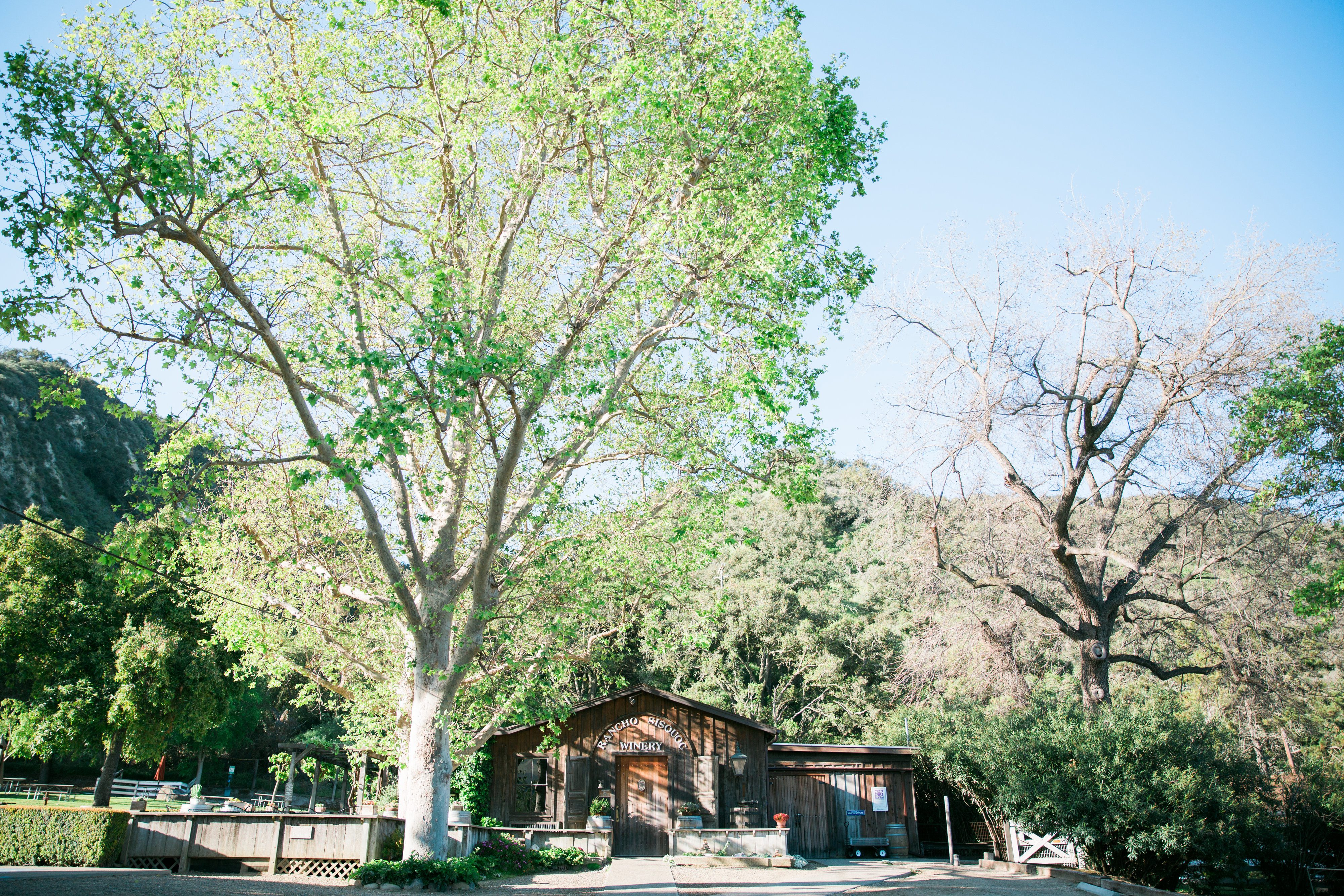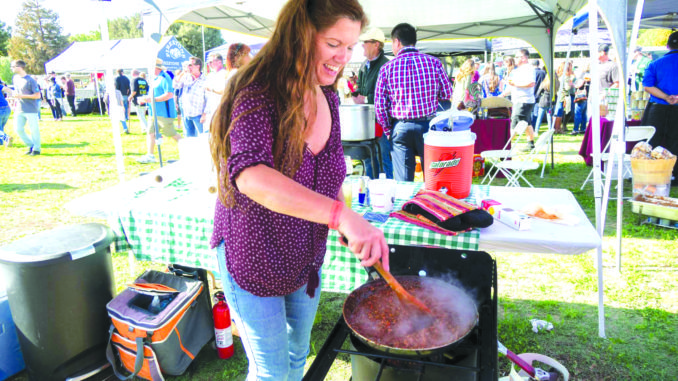By Kenneth Harwood
The economic impact of a winery can be measured, in part, by the number of cases of wine it produces in a year.
For example, northern Santa Barbara County is home to three medium-size wineries that produce at least 50,000 cases of wine a year, and up to 500,000 cases. A standard case contains 12 bottles of 750 milliliters each.
The bar graph shows these three wineries in addition to one small winery in our neighborhood. By industry definitions, small wineries produce at least 5,000 cases a year, and up to 50,000 cases.
Very small wineries, which are 40 percent of the wineries in the United States, produce between 1,000 cases a year and 4,999. Limited-production wineries are even smaller, producing fewer than 1,000 cases a year. They make up 39 percent of all the 9,091 wineries in the country. So, together, the very small wineries and the limited-production wineries make up 79 percent of U.S. wineries.
Three of the four wineries in the graph have a postal address in Los Olivos. Cambria Estate, the largest of the four, has a Santa Maria address.
Santa Barbara County government issues land use permits for 64 wineries in north Santa Barbara County, and the number is expected to continue to grow.
The economic impact of wineries goes far beyond cases of wine produced. Wineries and vineyards provide employment, buy many kinds of supplies and services, pay taxes, and attract visitors to the North County, where tourism and agriculture are leading industries.
For details of winery sizes, go online to Wines and Vines Analytics. An article on Page 15A of the Pacific Coast Business Times of July 14, 2017, presents results of a survey of wine production by winery in San Luis Obispo, Santa Barbara, and Ventura counties. Details of land use permits are online in the Santa Barbara County Winery Ordinance Update Project, Draft Final Environmental Impact Report, November 2016.
Kenneth Harwood is the economist for the Solvang Chamber of Commerce.








